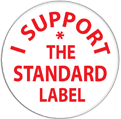Pignerol Antoine recently asked some questions about VRM and I thought I’d answer them publicly.
Is VRM really different from social CRM ?
Does VRM work with a CRM ?
Sure. A CRM is a company-centric system. Every company should pay attention to its customers and CRM is currently the best-of-class thinking on the enterprise-side for how to do that. Different VRM services act on behalf of the individual, yet still require connecting to enterprise systems. For things to be seamless, VRM services should marry into CRM services for fulfillment.
Can VRM be implemented in all kinds of business?
Yes. Any business can support VRM services and be compliant with general VRM principles. Ultimately, it will be as easy for a small company to be VRM compliant as it is for a small company to run a blog or a wiki today. That takes some level of technical sophistication, but it is within grasp of any company that wants to invest a small amount of effort using freely available open source tools. Eventually, VRM will be available in the same way.
What’s needed for VRM to work ?
As customers are looking for lower prices, don’t you think that Personal RFPs are gonna cost more for customers (because they are personalized offers) ?
Two things here. First, I don’t think customers are just looking for lower prices. They are looking for better value.
https://blog.joeandrieu.com/2008/03/07/pricing-markets-and-demand-vrm-style/
One of my favorite examples of this is Shopatron’s business where they sell everything at 100% manufacturer suggested retail price, no discounts, no rebates:
https://blog.joeandrieu.com/2007/01/19/shopatron-redefines-vendor-relationships/
Second, the personal RFP is designed to eliminate transaction costs in the marketplace. Currently, product and vendor discovery is slow, expensive, and uncertain. That means buyers waste time and vendors waste advertising and lead generation dollars seeking the right match between needs and solutions. Any time transaction costs are reduced, you have an opportunity for better prices.
At the same time, Vendors will be discovering ways to provide more value to customers and the net result could easily be that customers will end up paying more for enhanced services or products. Ideally, this will mean that commodity products continue to drop in price while value-added customizations are welcomed by buyers and voluntarily paid for at a premium over the commodities.
What do you expect from VRM?
I expect it will take longer and be more work than any of us would prefer. However, I think that the concepts behind VRM, and hopefully our work developing standards and catalyzing working solutions, will enable a fundamental shift in the marketplace. As Doc Searls has said more than once, the industrial revolution is over: industry won. There is an incredibly powerful legacy of using computers and networks to help companies make more money (and create more value as they do so). Unfortunately, companies tend to think for themselves first, often to the detriment of overall economic benefit.
I see a world where every individual is engaged and empowered to get the most out of their relationships with vendors–vendors of all sizes. In that world, not only are individuals and vendors each getting and creating more value directly, the entire economy is operating at a higher efficiency as less money is spent on wasted advertising and product development and more is spent on fulfilling verified demand. This would supercharge Adam Smith’s invisible hand and provide a significant increase in aggregate global wealth for everyone. It takes the benefits of the zero-distance network and extends it efficiently into the domain of user-driven commerce.


Pingback: Equals Drummond » Blog Archive » Joe Andrieu Answers Questions about VRM
Pingback: things I read yesterday … 06/16/2008 « The Bankwatch